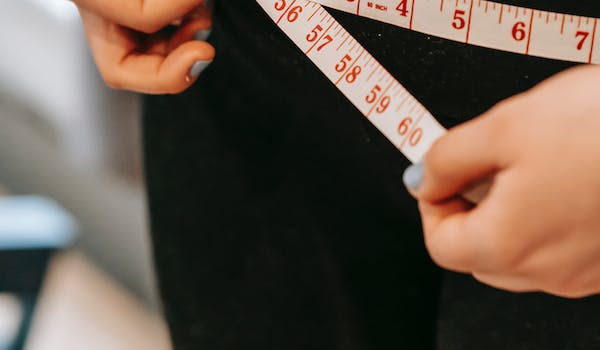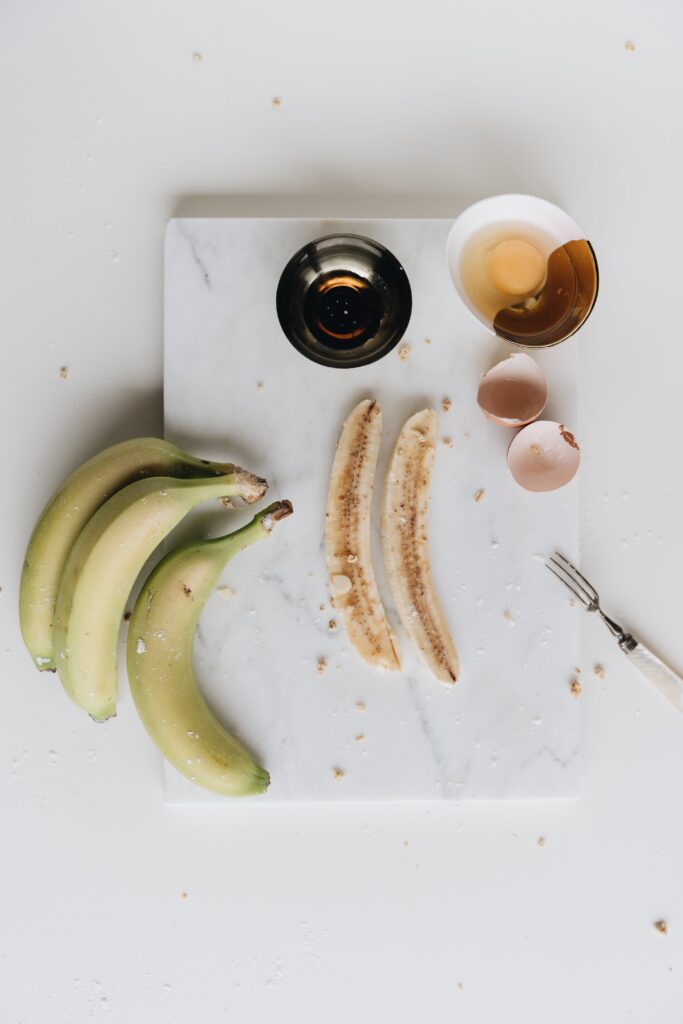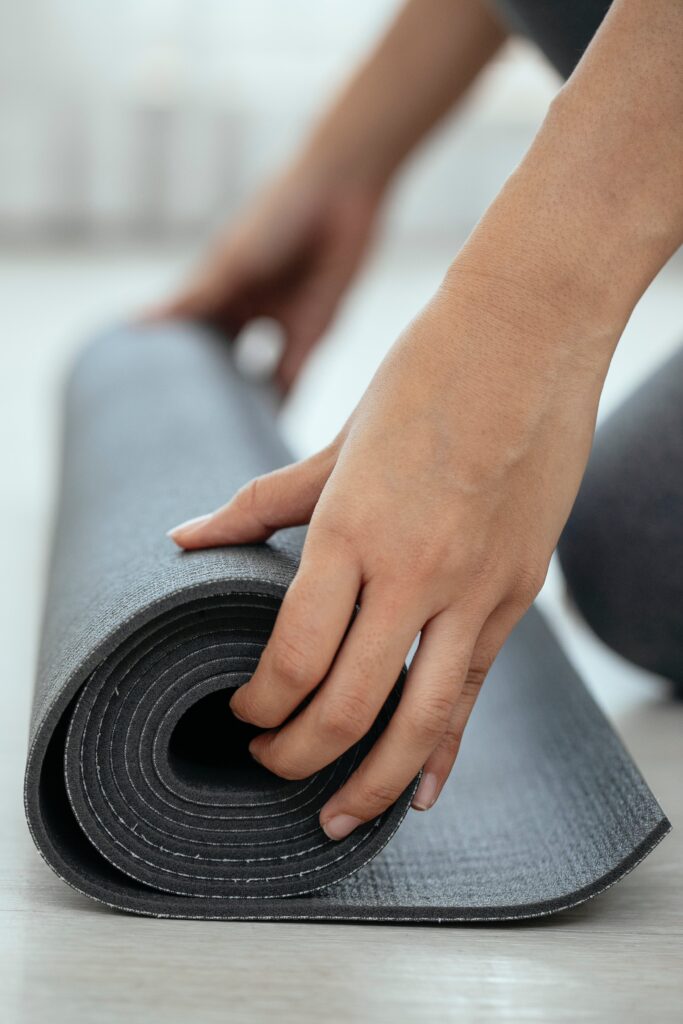Are you trying to lose weight quickly? Without risking your health and without regaining weight soon after?
Running can help you lose weight, but good eating habits and the right approach to weight loss are crucial. This is a journey rather than a quick fix, so it’s important to watch your steps.
So, how to lose 30 pounds while running? Read on to find out what you need to do to lose 30 pounds, from setting your goal to eating right.
In This Article:
How to Lose 30 Pounds in 3 Months
You can lose 30 pounds in a healthy way. Start with a manageable weight loss goal, decrease your calorie intake, establish healthy eating habits, and engage in regular physical activity. Having a support group also helps.
Let’s take a closer look at the key steps on your journey to lose 30 pounds.
1. Set an achievable goal

Before you start a workout regimen or follow a weight-loss diet, it’s important to be realistic. Is 3 months the right timeframe for you to lose 30 pounds?
The answer depends on your current weight, fitness level, working schedule, existing commitments, and other factors.
Remember that losing weight in a healthy way is not only better for your body but less likely to lead to weight gain in the future.
Rapid weight loss may lead to weight regain through metabolic changes, muscle loss, hormonal changes, and possibly frustration with the restrictions associated with dieting.
With that in mind, for many people, 3 months is a realistic timeframe for losing 30 pounds. That amounts to losing a little over 2 pounds a week.
You need both exercise and implementing dietary changes to get this kind of sustainable weight loss. Your journey can become a lot easier with personalized exercise and nutrition plans.
2. Decrease your calorie intake
To lose weight, you need to run a calorie deficit. In other words, your caloric intake should be lower than the number of calories you burn.
According to Harvard Health Publishing, to lose 2 pounds a week, you have to eat around 1,000 fewer calories than you need to maintain your current weight.
To find out how many calories you need to maintain your current weight, multiply your weight by 15. This calculation assumes you are moderately active.
Let’s take as an example a woman weighing 160 pounds. To maintain her weight, she would need roughly 2,400 calories (160 x 15). To lose up to 2 pounds a week, she would need to take in only around 1,400 calories a day (2,400 – 1,000 calories).
You can’t reduce your caloric intake and achieve a calorie deficit through exercise alone. You have to follow a diet plan that provides your body with enough nutrients while also promoting weight loss.
Nutritionists and weight loss experts can provide a weight loss diet plan for men and women. You can also create your own diet plan.
3. Avoid processed foods

Processed foods, including fast food, soft drinks, sugary foods, potato chips, and other snacks, have plenty of calories and few nutrients. They often have added sugar, high sodium levels, and unhealthy fats.
Consuming processed foods has been associated with a higher risk of becoming overweight or obese, according to a 2018 study.
Cutting back on processed foods is imperative to reducing your calorie intake. It makes losing weight safely and healthily so much easier. Watch out for energy drinks, too. They may have more calories than you need and work against your daily caloric goals.Tip: Discover some healthy, low-calorie snacks that can support your weight loss journey.
4. Get enough nutrition
Weight loss shouldn’t come at the expense of nutrient deficiencies. While you have to decrease calories and avoid certain foods, you must take in enough nutrients.
You need a balanced diet that combines fiber, lean protein, healthy fats, and complex carbs like whole grains.
Dietary fiber makes you feel full for longer and supports gut health. Protein helps repair your body after your workouts and wards off muscle loss. Good fats provide necessary calories and omega-3 and 6 fatty acids without endangering your weight loss goals.
Add to your low-carb diet whole grains that provide complex carbohydrates, such as whole wheat bread, quinoa, or buckwheat. Healthy protein-rich foods include lean meats, fish, tofu, and beans.
When it comes to healthy fats, you can’t go wrong with olive oil, linseed oil, avocado oil, and nuts and seeds. But remember that these have plenty of calories, so consume them in moderation.
You may also want to learn more about a fat-protein-efficient diet and whether it’s right for you.
It goes without saying that you should eat plenty of fruits and vegetables. These provide essential nutrients like vitamins and minerals as well as antioxidants that support overall health.Tip: Learn more about what goes into a healthy diet for runners.
5. Exercise regularly

To lose 30 pounds in 3 months, you need to engage in regular and sustained physical activity. You need to be ready to sweat – there’s no shortcut to this. The good part is that working out can be fun and makes you feel great.
A 160-pound person burns around 15.1 calories per minute running at a moderate pace, according to the American Council on Exercise. That can add up to 450 calories in half an hour.
To lose 30 pounds in 3 months, you may have to engage in longer training sessions and combine running with other activities. For example, you may run in the morning and take a long walk in the evening. According to the same source, walking 10,000 steps a day will help the average person burn 3,500 calories a week.
Other activities that enable you to burn calories effectively include cycling, jump rope, rowing machine, hiking, aerobic dancing, and swimming. Resistance training, such as exercises with free weights like dumbbells, can also help.
High-intensity interval training will help you burn more calories faster. Aim for at least 30 minutes of exercise per day with 1-2 rest days a week.
While you may be excited about exercising, don’t start too hard too soon. If you haven’t worked out in a while, start slow and gradually increase the intensity of your workouts. Ideally, you want to follow a training plan adapted to your fitness level and read more about running for overweight beginners.
Tip: Discover 7 simple but effective exercises you can do every day for a healthy lifestyle.
6. Get enough sleep

Not getting enough sleep or sleeping too much can lead to weight gain. During sleep, your body rests and recovers. What’s more, sleeping burns calories.
A 160-pound person can burn more than 22 calories an hour while sleeping. That can amount to over 150 calories burned per night for the recommended 7+ hours of sleep for adults.A healthy sleep routine is compatible with intermittent fasting, including the popular 14:10 intermittent fasting method. Intermittent fasting restricts your caloric intake to a daily window and can promote healthy weight loss.
7. Drink plenty of water

When you’re trying to lose weight, water can do more than hydrate you. One scientific study found that drinking 500 ml of water increased calories burned in the next hour by 24%.
Another study found that drinking the same amount of water half an hour before breakfast reduced calorie intake.
Drinking water is also important if your diet is rich in fiber. Water helps your body digest fiber. Eating lots of fiber without drinking enough water may lead to bulky stools.
8. Track your progress
Research suggests that people who engage in consistent dietary tracking are more likely to lose weight. You want to track meals, calorie intake, workouts, and weight changes. You can also keep a food journal.
Monitoring your calorie intake is crucial to adjusting it effectively as you shed extra pounds. To continue losing weight once you start shedding pounds, you may have to fine-tune your calorie deficit.
Monitoring your workouts and measuring muscle gain is also important. Since working out builds muscle mass, without accurate tracking, it may seem like you’re not losing body fat.
9. Share your journey
Sharing your journey can keep you motivated. Running for weight loss is wonderful, but it can also challenge you. During the more taxing days, encouragement from friends and family can be invaluable.
Sharing your journey is also a way to acknowledge your progress. Don’t limit yourself to friends and family only. Local runner communities and other runners can provide valuable support during your journey.
If staying motivated is particularly challenging for you, consider accountability buddies. These are people who listen to your goals and provide encouragement and support. You can become someone else’s accountability buddy in turn.
10. Avoid weight loss pitfalls
Weight loss is a big industry, and like other industries, it has its pitfalls. Supplements advertised for weight loss may promise to help you, but they are often not backed by science.
Radical weight loss diets can be another problem. It’s important to decrease calorie intake responsibly and monitor your well-being.
Healthy and sustainable weight loss doesn’t happen overnight. Consult with your general practitioner or dietician if necessary. This is especially important if you have any existing health conditions, including being obese.
Takeaways
Before you embark on your journey to lose 30 pounds, here are a few key things to remember:
- You can lose 30 pounds in 3 months, provided you maintain a calorie deficit in which you eat fewer calories than you burn.
- A low-carb diet can help you burn fat, but you need to ensure you get enough nutrients, protein, and healthy fat.
- Additional physical activity such as cycling, swimming, or strength training can help you burn more calories.
- Tracking your progress and keeping a food journal can make your journey easier.
- Rapid weight loss can be unhealthy and may lead to quick weight regain.
- Avoid weight loss products and diets that sound too good to be true, as they may be unhealthy.
- Sustainable weight loss requires a healthy diet and an effective exercise routine that motivates you to put in enough physical activity.
Starting your running journey becomes easier with expert guidance. Joggo is a great companion for any beginner runner who sets out to lose 30 pounds or more.
Joggo provides a personalized running plan and meal plan adapted to your goals. You can choose between over 10 popular diet types.
You’ll get hundreds of educational articles and tips and tricks every step of the way to help you stay focused, motivated, and healthy.Begin your weight loss journey today with Joggo.
FAQs
How fast can I lose 30 pounds?
Losing 1-2 pounds a week is a gradual and steady weight loss strategy that reduces the chances of weight gain, according to the CDC. Following this strategy, it could take 15 to 30 weeks to lose 30 pounds.
With that in mind, other factors can affect your weight loss rate, including your age, fitness level, existing health conditions, medications, worklife, and more.
Very fast weight loss calls for a possibly unhealthy calorie deficit. It may encourage relapse into unhealthy eating habits later on. The bottom line is that trying to lose 30 pounds faster than in 3 months could be unhealthy.
Is it possible to lose 30 pounds in a month?
If you’ve been wondering how to lose 30 pounds in a month, the simple answer is that you shouldn’t. Achieving this kind of rapid weight loss requires that you burn around 1 pound of stored body fat per day.
To achieve this, you have to burn around 3,500 more calories than you eat daily. In other words, you have to fast most of the time and burn 2,000 calories through exercise.
This extreme weight loss strategy could lead to injury, organ shutdown, and even death. The only exception is if you are morbidly obese and hold a lot of extra water weight.
Even then, it’s better to consult with a specialist before trying to lose 30 pounds in a month. The bottom line is that it’s better to create a healthy diet plan with a personal trainer or other professional to lose weight safely.
References
- Beale, C., How Many Pounds Can You Lose In A Year? Explained+ Tips One to two pounds per week is the recommended amount of weight loss. So if you crunch the numbers, this translates into losing about 50 pounds a year.
- Schnur, S.A., 2006. The Reality Diet: Lose the Pounds for Good with a Cardiologist’s Simple, Healthy, Proven Plan. Penguin.
- Rotchford, L., 2017. Women’s Health Take It Off! Keep It Off!: Real Women Reveal How They Lost the 20, 50, and Even 100 Pounds—and How You Can Too!. Rodale.
- Darden, E., 2014. The Body Fat Breakthrough: Tap the Muscle-Building Power of Negative Training and Lose Up to 30 Pounds in 30 Days!. Rodale.
- Chestnut, M. and Obadike, O., 2017. The Cut: Lose Up to 10 Pounds in 10 Days and Sculpt Your Best Body. Hachette UK.













